Mother’s Day is timed very appropriately as various creatures currently embark on their spring preparations for new life. Therefore we’ve chosen to show our appreciation for hard-working parents by looking at how some of them raise their young within the animal kingdom.
Grey Seals – Halichoerus grypus
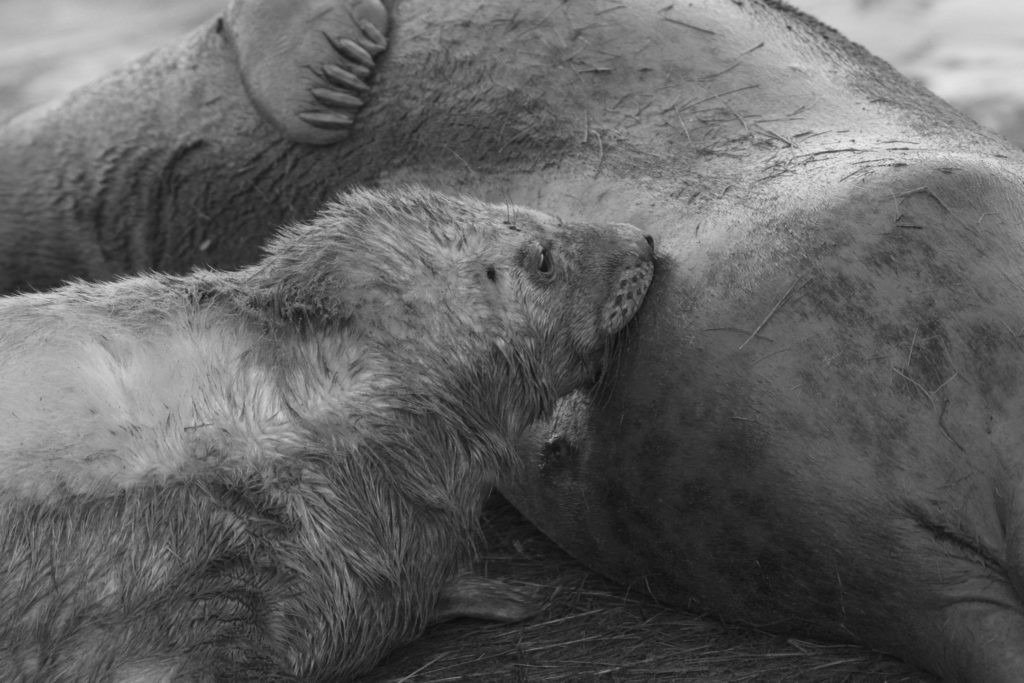
Come autumn each year, an exciting event begins that in certain places in Britain, can be observed closely by the general public. It is the grey seal pupping season.
From around September until November, female grey seals haul themselves onto land in order to give birth to their young. At the same time, males follow with intentions of mating.
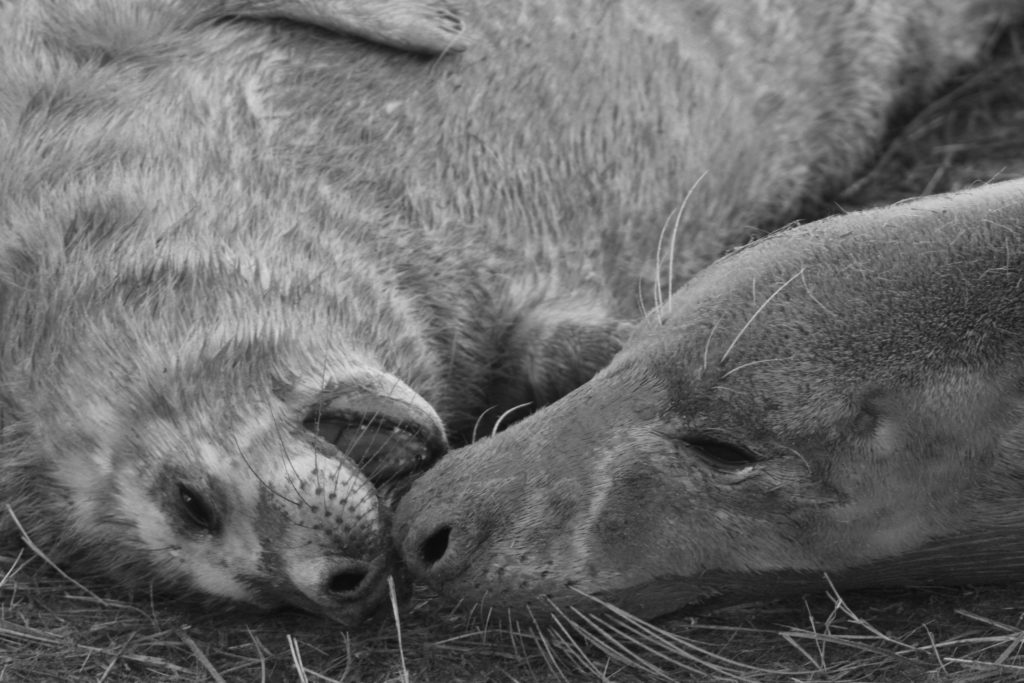
The mothers and pups have relationships that are endearing to watch whilst the youngsters suckle for their first three weeks or so. During those weeks the mother’s fatty milk helps the pup gain around 2kg of weight each day. As a consequence, after starting out their life at roughly 14kg, the milk helps them to triple their weight; preparing them for their time at sea.

With their mother’s help, the pups go from cute, white, fluffy youngsters to impressive adults that are prepared to embark upon their own adventures.
Kittiwakes – Rissa tridactyla

The kittiwake’s onomatopoeic call is enough to alert you to their presence within a seabird colony. At the right time within the season, it shouldn’t then be long until you see that fluffy chick sat beside them. Each year the males return to their previous nesting sites and call-out to females to join them. If a male and female were successful the previous year, they may pair up again and begin breeding quite early.

The kittiwakes make a comfortable nest that often contains mud, seaweed and grass. Their chicks (normally two of them) hatch after 25-32 days of incubation. They should be in relative safety with the steep cliff keeping away some predators, whilst neighbouring kittiwakes provide further protection.
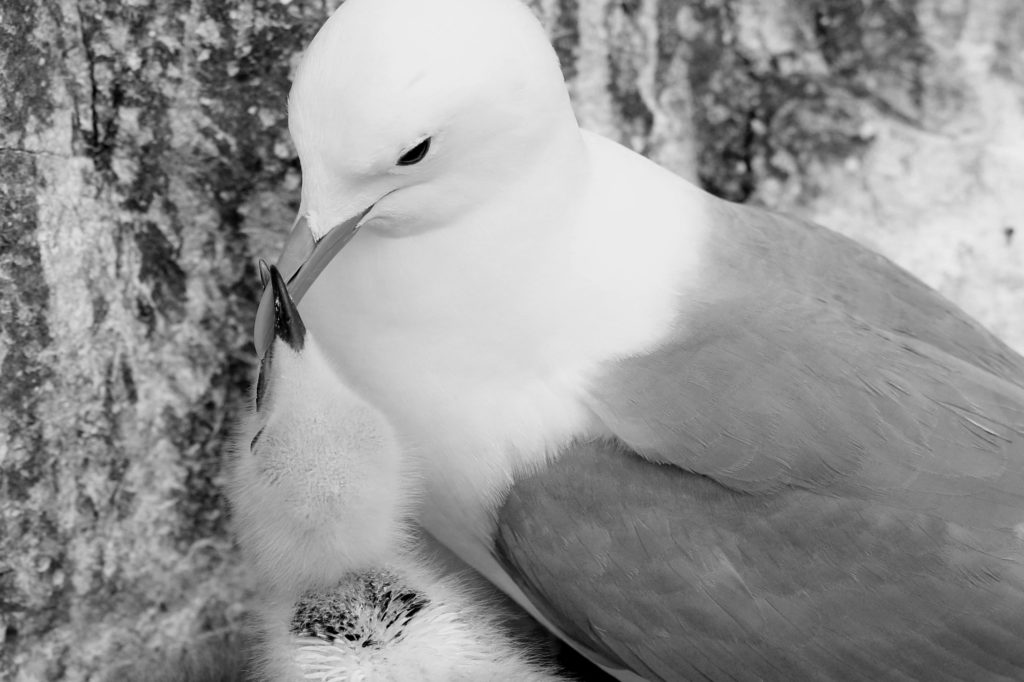
The chicks can look forward to regular meals of regurgitated fish, however, when they are about 33-54 days old, it’s time for them to fledge. They need to learn quickly in order to survive but if they get it right, they could live until their late twenties!

Coot – Fulica atra

I never found coots to be very interesting birds until I saw them at the nest. Suddenly a character emerged that was hidden before. The chicks were vibrant and the parents proved attentive.
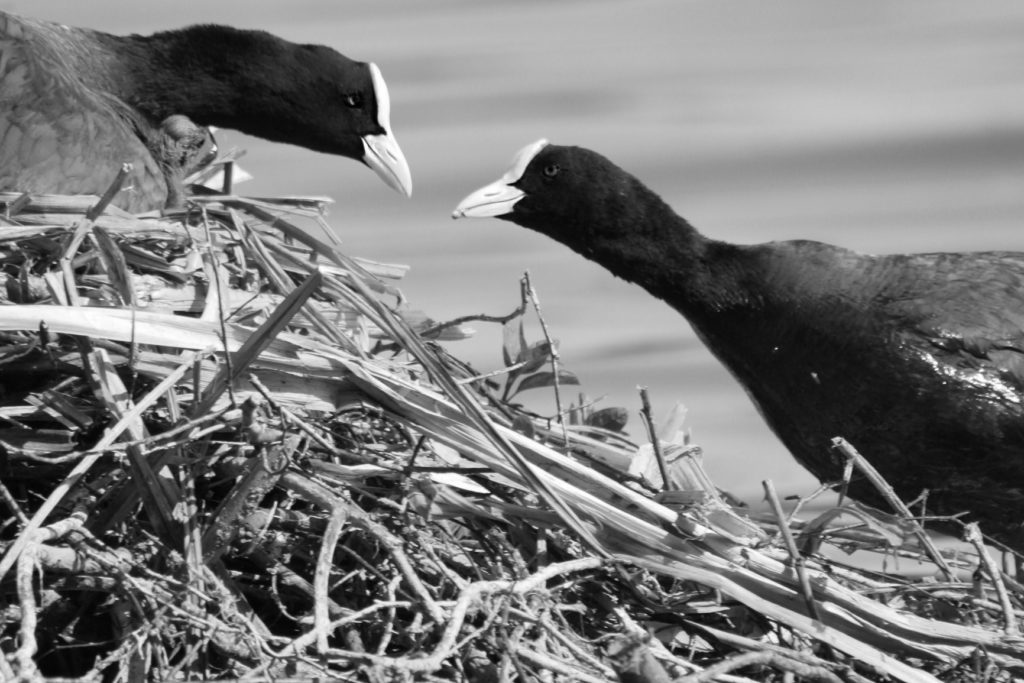
Coots are easy birds to find and their nests are large and therefore simple to spot. The parents are busy in the breeding season, caring for up to ten eggs at a time and perhaps as many as 3 clutches in a year.
Sadly many of the chicks may starve or be predated by birds such as herons or gulls. If they’re lucky they’ll be about ready for independence at around 2 months old. We can then enjoy watching even more coots floating about on our local lakes.

Starling – Sturnus vulgaris
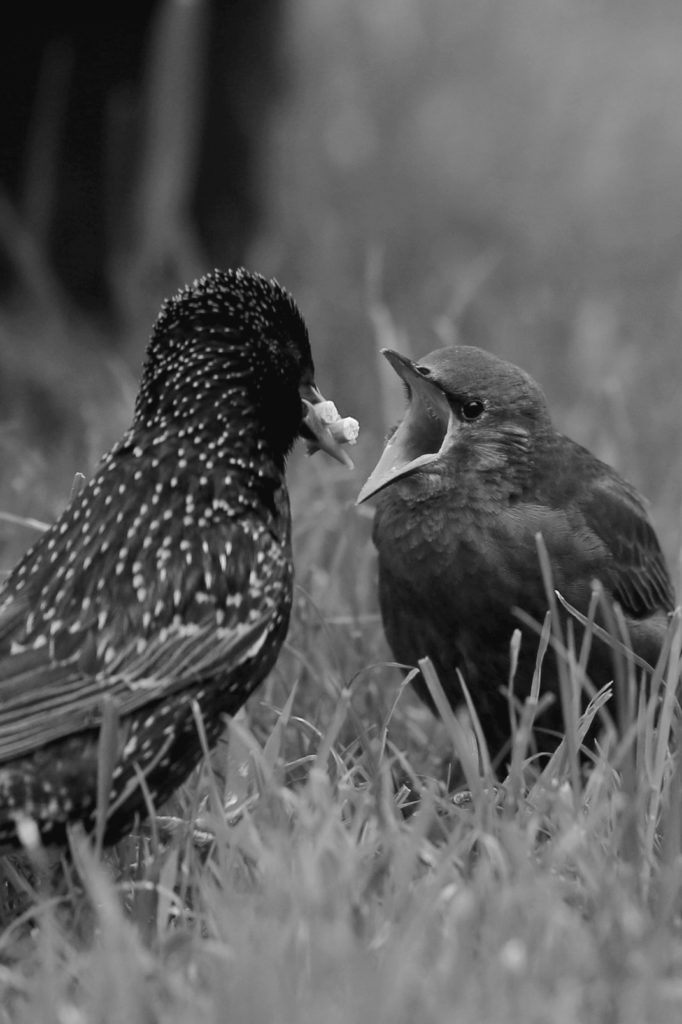
If you have starlings in the vicinity of your home, you will likely know when the young have fledged. Suddenly gardens fill up with boisterous, squawking birds that demand food and water at a faster rate than anyone can provide it.
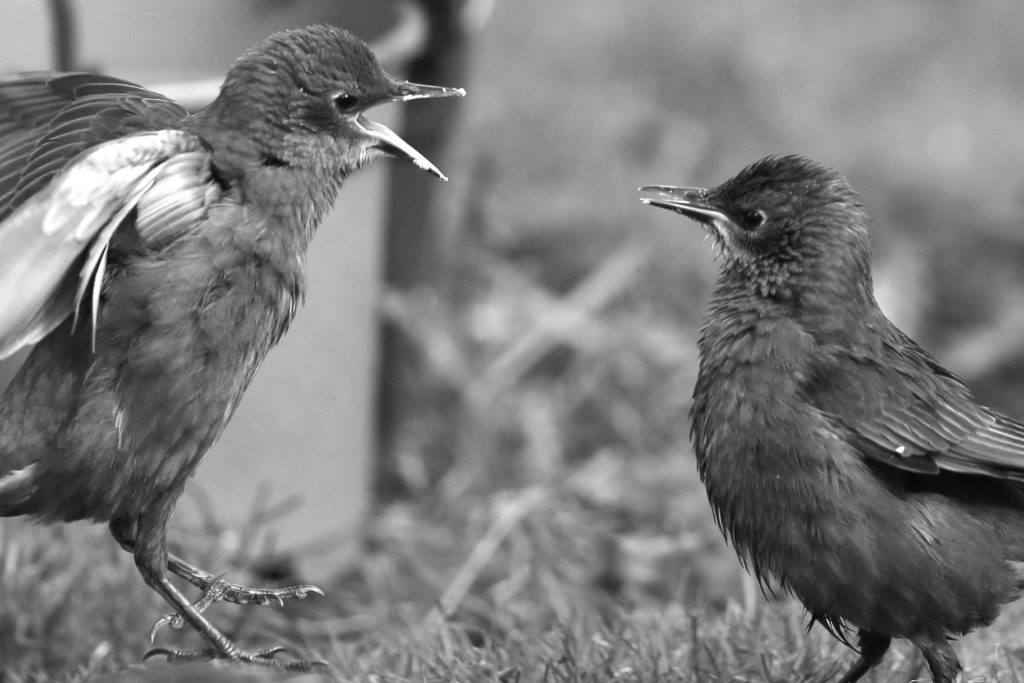
Welcome to spring! It took those young starlings only 12 days to hatch and about three weeks to fledge. The male will have built the beginning of the nest in a hole or cavity and the female finished it. She will have done most of the incubating of her 4-6 eggs and the effort she and the male put in mostly pays off. Around 70% of the eggs that were laid turn into successfully fledged starlings.

Arctic Tern – Sterna paradisaea
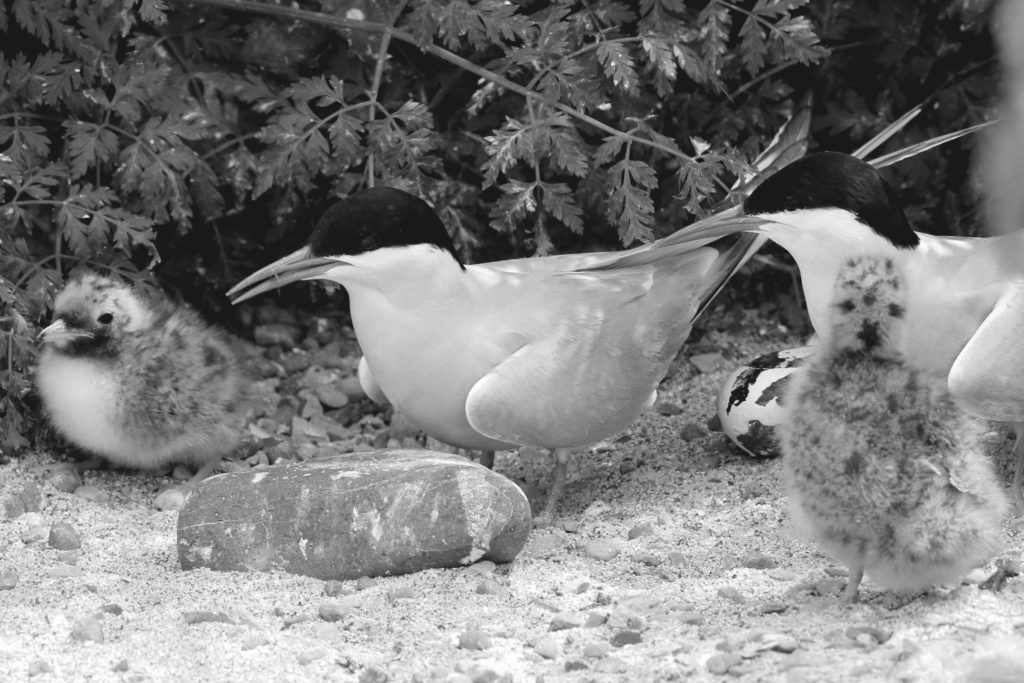
If you have received the attentions of an Arctic tern, you will understand they’re not to be messed with. The breeding season begins with flamboyance as the male tern calls loudly whilst flying over the colony with a fish. A female will show that she’s interested by involving herself in an elaborate chase. The terns ‘strut’ about on the ground before passing the fish between them.
They prefer to mate with previous partners and after one or two eggs have been laid, they share the incubation. After 20-24 days, their camouflaged chicks emerge from their eggs. The parents provide them with prey, often at the cost of the adult’s own health and weight.

There are many predators about within a bird colony, so the chicks must learn to hide. Those that survive are able to fly when they are around 21-24 days old. The parents and chicks take to the skies together so the adults can continue to provide their chicks with food for another month at least.

Humans and Other Animals
The wonderful thing about parenthood within the natural world is its variety. All of the creatures we’ve mentioned above, receive some sort of care after birth or hatching but some species go above and beyond.
The ultimate sacrifice must be that of some spiders because they give their life so that their young can eat them. It sounds horrific doesn’t it! Although this attentiveness to the needs of their young may not be any more important than that of humans. As humans I believe we may be unique as we support our children throughout their lives and remain an important part of their survival.
